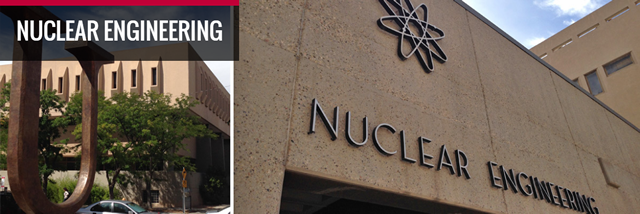
Nuclear Engineering ETDs
Publication Date
5-2-1975
Abstract
Given that the prime objective of safeguards for special nuclear materials (SNM) is nonproliferation of nuclear weapons, it is logical that safeguards priorities should be commensurate with the relative suitabilities of the various SNM forms in existence for application in nuclear explosives. The SNM forms in each reactor fuel cycle, for example, should be screened and ordered according to their relative suitabilities for such misapplication. Significant considerations in assigning protection priorities include the relative suitabilities based on materials characteristics, inherent protection features of the mateerials or the processing of the SNM forms, the quantities of these materials in existence, and the vulnerability of the locations where these materials are present to theft or diversion. The central objective of this study was to determine the relative suitabilities and radiological self-protection of SNM forms in the commercial High-Temperature Gas-Cooled Reactor (HTGR) nuclear fuel cycle proposed by the General Atomic Company.
The three modes of operation of the reference fuel cycle were examined to determine the SNM forms present and their locations.
The relative suitabilities of the SNM forms identified for explosives applications were then evaluated; the infinite multiplication factor and prompt neutron generation time were identified as the most significant materials characteristics in identifying suitability. The SNM forms were rank-ordered according to estimated fast critical masses which were calculated using a simplified multigroup method devised for rapid, economical screening of SNM forms for this purpose. Calculated critical radii 1-1ith a thin reflector (t1-10 centimeters of beryllium) 1-1ere found to be 14 to 35 percent larger than published values for SNM forms previously investigated, with resulting mass estimates 47 to 147 percent larger than publisher. values. The intended purpose of the estimates was not to determine absolute values, however, but to determine relative suitabilities.
Self-protection of the SNM forms identified by their inherent radiation hazards was evaluated and determined to be inadequate, given very simple precautions.
Ranking of the SNM forms identified according to increasing fast critical masses was accomplished for both gun-assembled and implosion assembled weapon applications. Bred 233 U was identified as the most suitable form considered for both gun- and implosion-type weapons.
Document Type
Thesis
Language
English
Degree Name
Nuclear Engineering
Level of Degree
Masters
Department Name
Nuclear Engineering
First Committee Member (Chair)
gleen Whan
Second Committee Member
John Foley
Third Committee Member
Illegible
Recommended Citation
Johnson, Philip G.. "Safeguards Considerations For A Htgr Nuclear Fuel Cycle." (1975). https://digitalrepository.unm.edu/ne_etds/122
